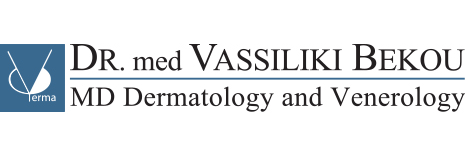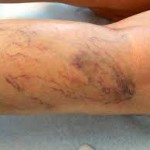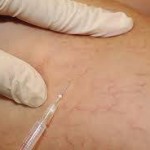( For the texts and pictures books, publications, guidelines for example in awmf.org and contributions of colleagues were consulted.)
Spider veins are small veins bluish or reddish just below the skin surface. The veins are dilated capillaries and may cover a large area or be isolated. They appear on both face and body. Spider veins on legs are due to many factors, such as standing, hormonal factors, pregnancy, venous insufficiency, obesity, trauma and heredity. Hair removal methods such as wax or depilatory exacerbate the problem of spider veins.
Mostly in areas of lower and upper thighs. Spider veins can, but do not point to a disease of the deep venous system. So there should be a duplex ultrasound examination of the venous system prior to treatment of spider veins.
For the treatment of spider veins different treatment methods are offered. The easiest, safest and most especially the one with the best aesthetic results, is the sclerotherapy. This therapy means that a solution, Polidocanol is injected into the intact fine vessels, which leads to a bonding (“sclerosing”) and thus to a disappearance of the interfering vessels. The drug produces lesions in the inner lining of the lumen of the vein and thus it closes. It can become a darker pigment, hpyerpimgenation, that gets slowly away.
How many treatments are necessary to get your desired result, depends above all on the number of spider veins and the expectations of the person. The treatment can be performed as an outpatient. There are no limitations in everyday life, except that you may subject yourself to sunlight for six weeks.
We encourage all our patients to wear elastic compression stockings for five to ten days after each meeting.


